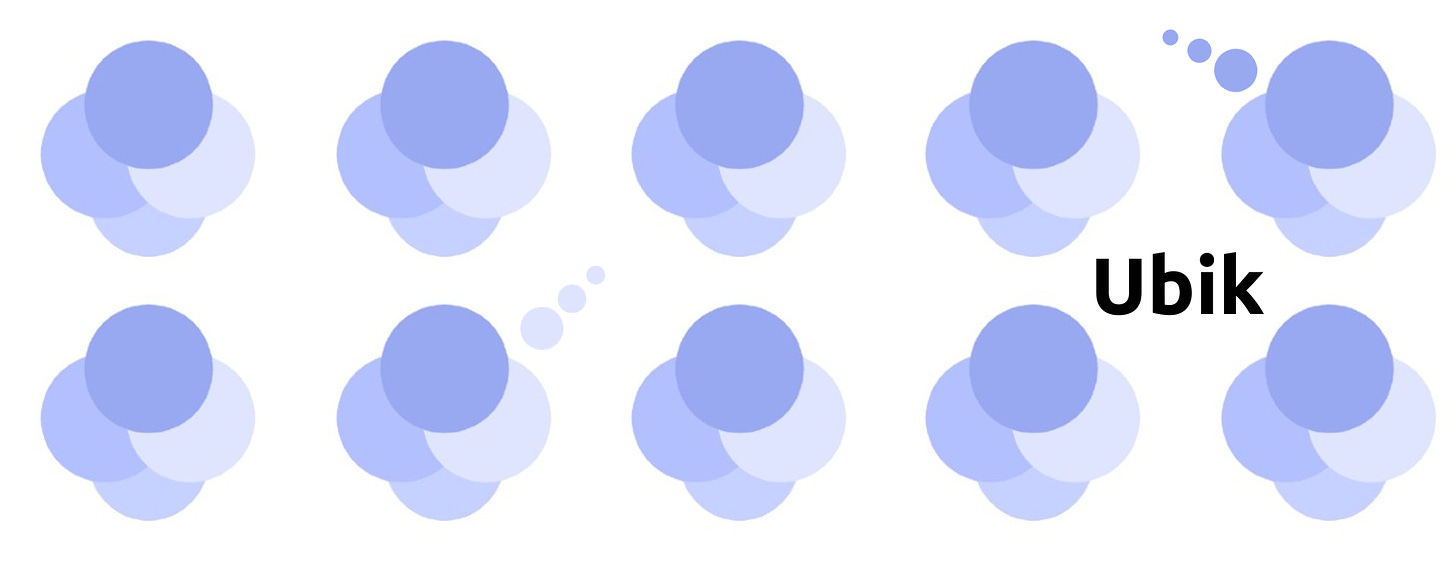- Published on
Artificial Intelligence in Education (AIED)
Welcome to the Ubik Blog!
If you haven’t already subscribed, subscribe here!
Here’s some important stuff you should check out :)
Eric Adams slashes 2 billion dollars over two years from NYC education.
Check out our AIED tools here:
Artificial Intelligence in Education (AIED):
How technology continues to redefine the way we learn
Calculator Confusion
'Calculators can't replace understanding. They're just a crutch!' When calculators were a 'groundbreaking' technology, that's what educators said. As you can see from the picture above, they took to the streets in protest.
We hear the same worries about using AI in the classroom today. And with new technologies arriving daily, it's hard to keep up with how these "groundbreaking" discoveries will affect our lives in school.
That said, it's hard to imagine how students would have studied for the SAT or learned calculus without practicing complex formulas on the TI-84 graphing calculator.
There are, of course, similar fears about how AI tools will undermine learning. Those fears are valid, and the risks should be considered when building Artificially Intelligent Education Tools (AIED).
There are also many positive ways this technology can be used beyond speed and ease.
Language Learning
In NYC alone, there are 140,000+ English-learning students. This leads to lower grades and higher dropout rates. Some NYC public schools with higher rates of English language learners have created tutoring programs to help students.
Introducing apps like Duolingo in and out of the classroom proved that Mobile-Assisted Language Learning (MALL) improves student test scores compared to students taught without MALL practices.
With the infusion of AI into these already practical and fun learning methods, language learning and translation tools like Duolingo or Google Translate have seen massive improvements in the quality of translation. AI-assisted language learning will be more effective and increase positive educational outcomes for students learning a second language or in cross-language environments.
By optimizing language learning environments and promoting interactive learning experiences, AI helps students interact with the language more effectively.
AI technology has been particularly beneficial for language learners, as AI systems can provide accurate feedback on pronunciation and help improve speaking and listening skills. (Zuraina, Ali., 2020)
Intelligent Tutoring Systems (ITS)
Classrooms vary. No two students have the same learning preferences, which makes it hard for educators to provide students with personalized learning experiences. AI can collaborate to assist educators in creating individualized learning.
For example, Intelligent tutoring systems (ITS) deliver students information, activities, and quizzes designed just for them. This new kind of personalized, interactive learning is proving more effective than new impersonal yet interactive technologies like smartphones.
Smartphones opened the door for interactive online learning. Gamifying the learning process through fun activities and exercises allows students to learn in and out of the classroom. However, these apps lack a teacher's assistant ready to answer any question from any student at all times.
ITS uses AI tools like Chatbots, which provide students with unique, personalized experiences while creating a highly interactive experience so students can engage where and when needed.
Chatbots
Imagine you are a work-study college student struggling to find the time to meet your professors during their office hours. With class-focused Chatbots, office hours are no longer something to miss. Students can receive more personalized help with flexible hours.
Chatbots are intelligent agents that emulate human communication, allowing users to interact with devices as if conversing with a real person. Chatbots are one of the most used AI technologies for educators and students.
Using chatbots for learning lets students interact with education in a friendly/comfortable environment, promoting knowledge and reducing anxiety when learning new topics (Kim et al., 2021).
The application of chatbots in education "significantly improves learning outcomes and student happiness, maximizing student learning abilities and achievement." (Adiguzel et al., 2023)
Chatbots designed for students can act as a 24/7 tutor, always ready to answer questions in and out of the classroom.
Loading...
Collaboration, NOT Automatic Generation
Calculators don't replace understanding, and neither should using AI. Collaborating with AI means using AI technologies to promote learning instead of generating answers automatically. Uncollaborative AI tools are focused on quantity and speed, leading to weak responses and unproductive learning environments that act more like glorified search engines.
Designing practical, collaborative AI tools for education ensures students understand the subject matter rather than finish the assignment with the correct answers. Experts are starting to acknowledge that AI tools that foster collaboration create educational opportunities -- much like the calculator did in the 70s (Holmes et al., 2022).
Fiig.ai by Ubik
Fiig.ai is an academic tool that helps humans collaborate with AI to understand research without sacrificing learning. While humans wrote this article, _ all sources in this post were found with fiig.ai._ FIig.ai is the latest tool developed by _ ****_Ubik. At Ubik, our mission is to harness the power of artificial intelligence to make the world more intelligent for humanity.
At Ubik, our mission is to harness the power of artificial intelligence to make the world more intelligent for humanity.
Join the collaboration: When you make an account at fiig.ai, you can:
Search peer-reviewed journals
Get help using your AI studies findings to PLAN your project
COLLABORATE with AI to finalize your report (with citation)
Repeat as needed.
Work Cited:
Adiguzel, T., Kaya, M. H., & Cansu, F. K. (2023). Revolutionizing education with AI: Exploring the transformative potential of ChatGPT. Contemporary Educational Technology, 15(3), ep429. https://doi.org/10.30935/cedtech/13152
Crompton, H., Burke, M., Gregory, K. H., & Johnson, L. (2019). An investigation of the effects of an AI math tutor on student anxiety. Educational Technology Research and Development, 67(2), 453-472.
Holmes, W., & Tuomi, I. (2022). State of the art and practice in AI in education. European Journal of Education , 57, 542–570. https://doi.org/10.1111/ejed.12533
Khan, I., Ahmad, A. R., Jabeur, N., & Mahdi, M. N. (2021). An artificial intelligence approach to monitor student performance and devise preventive measures. Smart Learning Environments, 8(1), 1-18. https://doi.org/10.1186/s40561-021-00161-y
Kim, H. S., Kim, N. Y., & Cha, Y. (2021). Is it beneficial to use AI chatbots to improve learners' speaking performance? Journal of ASIA TEFL, 18(1), 161-178. https://doi.org/10.18823/asiatefl.2021.18.1.10.161
Zuraina, Ali. (2020) IOP Conf. Ser.: Mater. Sci. Eng. 769 012043
Thanks for reading Ubik Studio! Subscribe for free to receive new posts and support my work.
Subscribe

